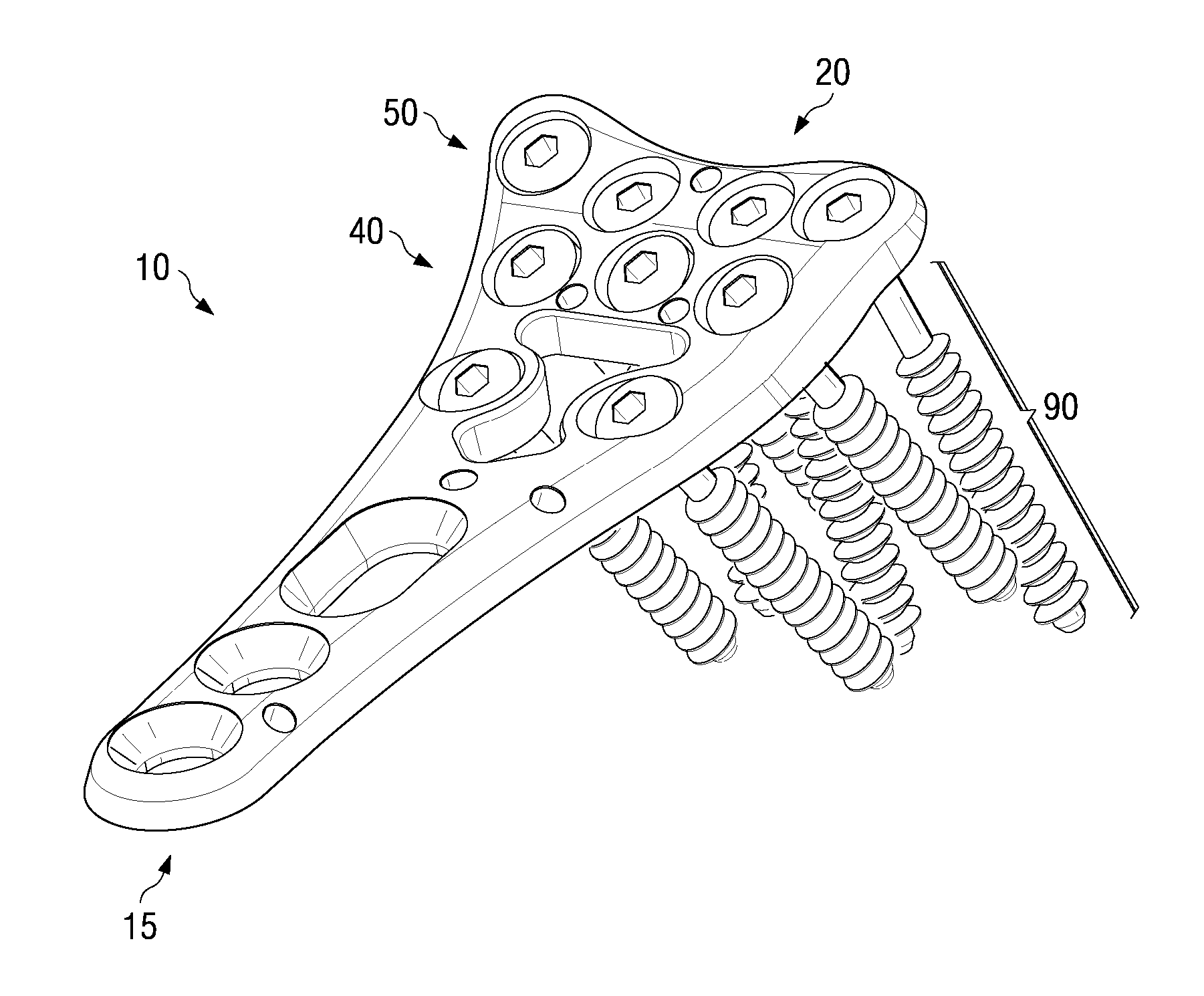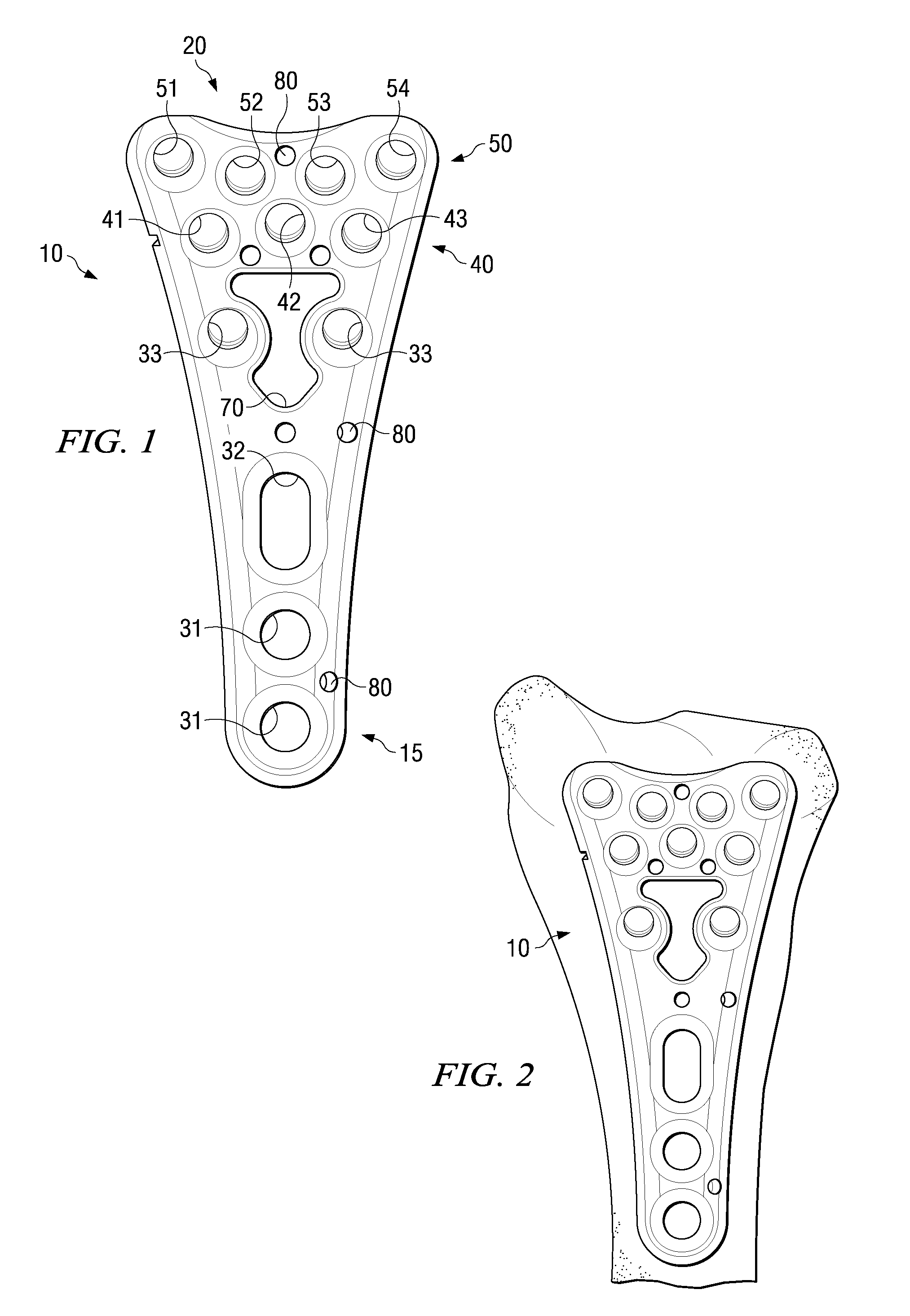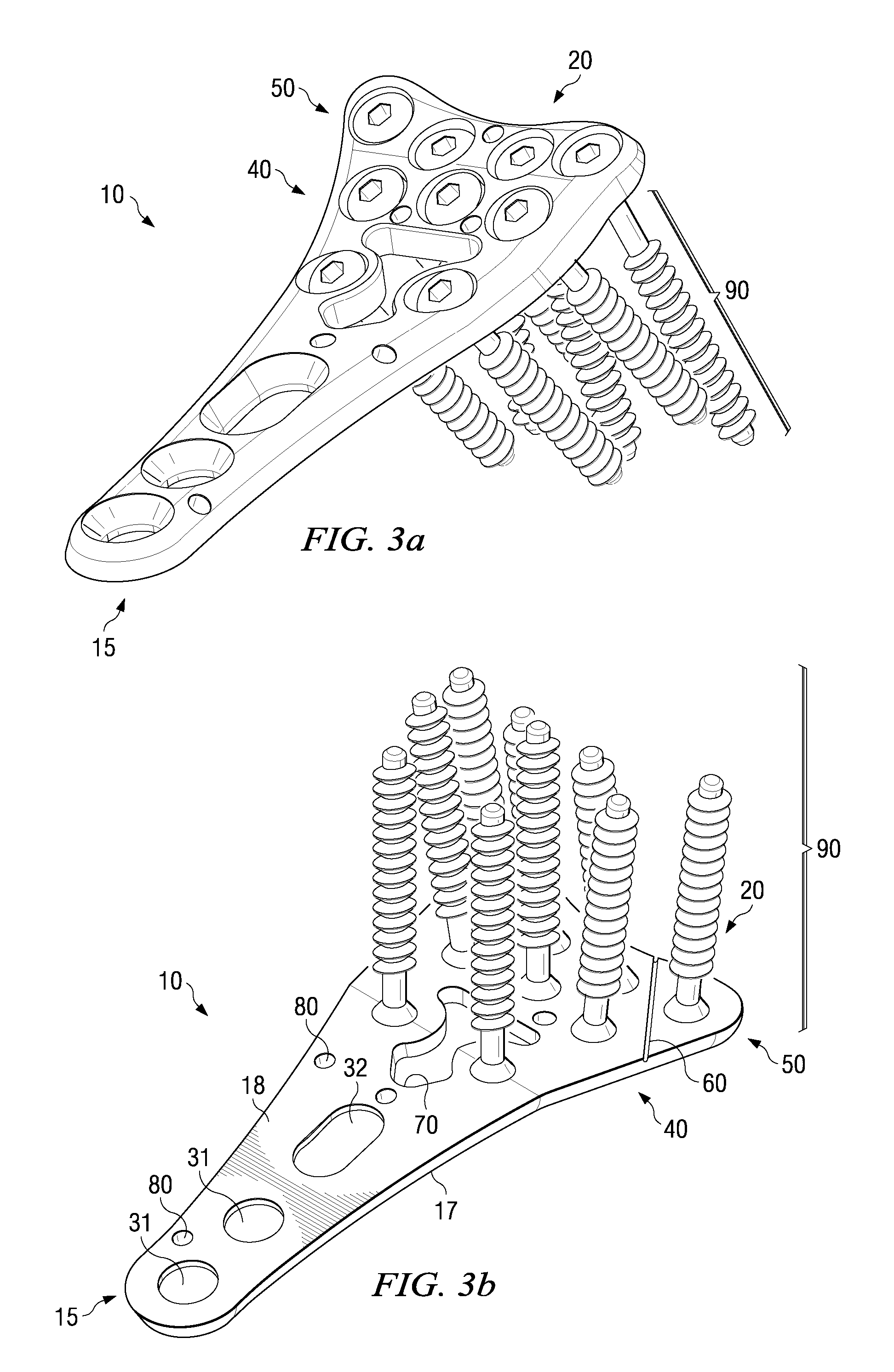Volar plate fixation device
a fixation device and a technology of a lateral plate, applied in the field of fixation of bone fractures, can solve the problems of multiple bone fragments, deformation, loss of range of motion, and long-term discomfort, and achieve the effect of improving stabilization and support, and assisting in the healing of fractures
- Summary
- Abstract
- Description
- Claims
- Application Information
AI Technical Summary
Benefits of technology
Problems solved by technology
Method used
Image
Examples
Embodiment Construction
[0025]Disclosed embodiments relate to surgically implanted internal fixation devices designed in accordance with anatomical studies. The disclosed embodiments comprise a volar plate designed for rigid attachment to the bone at the fracture site. Generally, the volar plate would be positioned on the volar side of a fractured radial bone, and would be held in place using bone screws anchored into the bone surface. Additionally, bone screws could be used to fix the position of bone fragments, stabilizing the wrist fracture.
[0026]FIG. 1 generally demonstrates an embodiment of the volar plate 10, illustrating the basic shape and features generally associated with the present volar plate 10, while FIGS. 3A, 3B, 3C, and 3D further demonstrate the disclosed volar plate showing different views and bone screw placement. The volar plate of FIG. 1 employs a generally Y-shaped plate 10, with a wider distal head portion 20 that tapers to a narrower proximal body portion 15. The distal head 20 ang...
PUM
 Login to View More
Login to View More Abstract
Description
Claims
Application Information
 Login to View More
Login to View More - R&D
- Intellectual Property
- Life Sciences
- Materials
- Tech Scout
- Unparalleled Data Quality
- Higher Quality Content
- 60% Fewer Hallucinations
Browse by: Latest US Patents, China's latest patents, Technical Efficacy Thesaurus, Application Domain, Technology Topic, Popular Technical Reports.
© 2025 PatSnap. All rights reserved.Legal|Privacy policy|Modern Slavery Act Transparency Statement|Sitemap|About US| Contact US: help@patsnap.com



